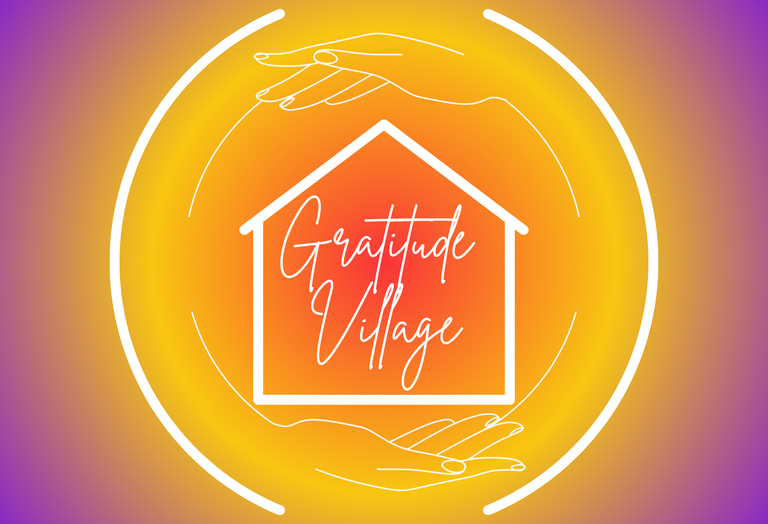Join our next In Person Info Session December 13 from 11am-1pm MST
Cohousing and Aging: A Supportive Environment for Seniors
In this post we discuss how cohousing can be an ideal living situation for seniors, offering a balance of independence and community support.
Gratitude Village
9/11/20244 min read


Cohousing and Aging: A Supportive Environment for Seniors
Aging is a natural part of life, but the way we live as we grow older can significantly impact our quality of life. For many seniors, traditional living arrangements—whether in large family homes, apartments, or even senior care facilities—can lead to isolation, loneliness, and a lack of support. However, the growing popularity of cohousing presents a compelling alternative that offers seniors a supportive, connected, and vibrant community environment. Cohousing, with its focus on shared living spaces, communal activities, and intergenerational connections, is increasingly being recognized as an ideal setting for aging in place.
The Challenges of Aging in Traditional Settings
As people age, they often face a range of challenges that can be exacerbated by traditional living arrangements. Loneliness is a significant issue, particularly for those who live alone or whose families are geographically distant. Social isolation can lead to depression, anxiety, and a decline in physical health. It also brings increased risks of cardiovascular disease and stroke as well as a higher chance of developing dementia. Additionally, maintaining a large home can become burdensome, both physically and financially, as mobility decreases and household chores become more difficult.
For those who move into senior care facilities, the experience can be equally challenging. While these facilities provide necessary care, they can also be isolating, with limited opportunities for meaningful social interaction. The institutional nature of many senior care settings can feel impersonal and restrictive, leading to a sense of disconnection from the wider community.
Cohousing: A Community-Centered Approach to Aging
Cohousing offers a radically different approach to aging—one that emphasizes community, connection, and mutual support. In a cohousing community, seniors are not isolated but are instead integrated into a vibrant, intergenerational environment. This model allows them to age in place, surrounded by people who know and care about them, while still maintaining their independence.
One of the core principles of cohousing is the design of shared spaces that encourage interaction and collaboration. Common areas such as kitchens, dining rooms, gardens, and workshops provide natural gathering points where residents can come together to cook, eat, garden, and socialize. For seniors, this means that there are always opportunities for connection, whether it's joining neighbors for a communal meal or participating in a group activity.
A Supportive Environment
One of the most significant benefits of cohousing for seniors is the built-in support system. Unlike in traditional neighborhoods, where neighbors may be distant or uninterested in forming connections, cohousing communities are intentionally designed to foster close relationships. This sense of community provides a safety net for seniors, offering both emotional and practical support.
For example, in a cohousing community, seniors might receive help with tasks that become more difficult with age, such as grocery shopping, cooking, or home maintenance. Neighbors can check in on one another, offer rides to appointments, or simply provide companionship. This mutual aid can significantly reduce the stress and burden of aging, making it easier for seniors to continue living independently.
Additionally, cohousing communities often organize group activities that promote physical and mental well-being. From yoga classes and walking groups to book clubs and cultural events, there are endless opportunities for seniors to stay active and engaged. These activities not only provide enjoyment but also help to maintain cognitive function, physical health, and emotional well-being.
Intergenerational Connections
Cohousing is frequently intergenerational, meaning that people of all ages live together in the same community. This mix of generations offers unique benefits for seniors, who may find joy and fulfillment in interacting with younger residents. In many cohousing communities, seniors play an essential role in mentoring and supporting younger families, whether through shared childcare, passing on skills, or simply offering life advice.
For younger residents, the presence of seniors provides a valuable opportunity to learn from their experiences and perspectives. These intergenerational relationships can help to break down stereotypes and foster mutual respect and understanding. They also create a sense of continuity, as seniors can share stories and traditions, ensuring that their knowledge and wisdom are passed down to future generations.
Aging in Place
One of the greatest advantages of cohousing for seniors is the ability to age in place. Unlike traditional senior care facilities, where residents may be required to move as their needs change, cohousing allows seniors to stay in their homes for as long as possible. Because the community is designed to be supportive and adaptable, many cohousing communities can accommodate the changing needs of their senior residents.
For example, cohousing communities may include accessible design features such as single-story homes, wheelchair ramps, or grab bars in bathrooms. Additionally, some communities may offer on-site services such as meal delivery, housekeeping, or health care, allowing seniors to receive the support they need without leaving their familiar environment.
This stability is particularly important for seniors, who often experience stress and anxiety related to the prospect of moving to a new and unfamiliar place. By allowing seniors to remain in a supportive, familiar community, cohousing can significantly enhance their quality of life and provide peace of mind.
Successful Cohousing Models for Seniors
Around the world, there are numerous examples of successful senior cohousing communities that demonstrate the benefits of this model. In Denmark, where cohousing originated, communities like Sundbo in Copenhagen have been specifically designed for seniors, offering a mix of private living spaces and communal areas where residents can come together for meals, activities, and socializing.
In the United States, communities such as Silver Sage Village in Boulder, Colorado, have been created with the specific needs of seniors in mind. Silver Sage Village offers a range of communal amenities, including a shared kitchen, dining area, library, and gardens, as well as regular social events and activities. Residents enjoy a close-knit community where they can age in place while remaining active and engaged and just across the street is their sister community Wild Sage which offers the multi-generational aspects that "seniors only" Silver Sage would miss otherwise.
Similarly, in the Netherlands, the Humanitas retirement home offers a unique approach to senior living by incorporating younger residents—university students who live rent-free in exchange for spending time with the elderly residents. This innovative model fosters intergenerational connections and provides seniors with regular social interaction, reducing loneliness and improving overall well-being.
In general, Cohousing offers a compelling alternative to traditional living arrangements for seniors, providing a supportive, community-centered environment where aging is not synonymous with isolation or decline. Through shared spaces, mutual support, and intergenerational connections, cohousing creates a setting where seniors can thrive—physically, emotionally, and socially. As more people recognize the limitations of conventional senior housing, cohousing stands out as a promising model for aging in place, offering a better quality of life and a deeper sense of belonging for seniors worldwide.
COMMUNITY
Join us in embracing nature, diversity and connection.
Sustainability
DIVERSITY
info@gratitudevillageco.com
720-689-4821
© 2025. All rights reserved.
AFFORDABILITY
Gratitude Village Inc. is a 501(c)3 charitable corporation that values diversity, equity, and inclusion as essential to our mission
Subscribe to our Substack
Refund Policy




Gratitude Village is a Proud Member of these organizations
